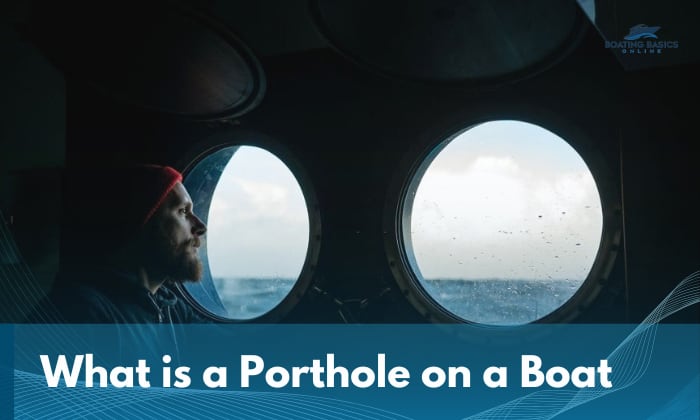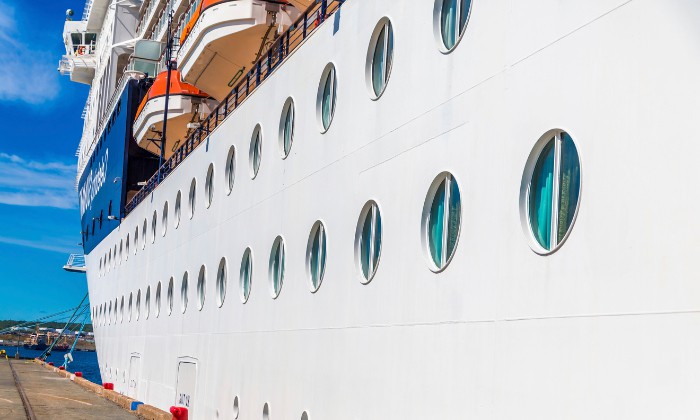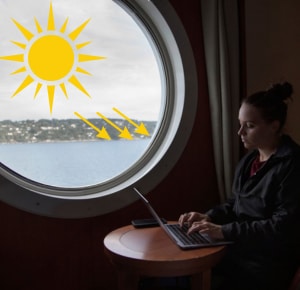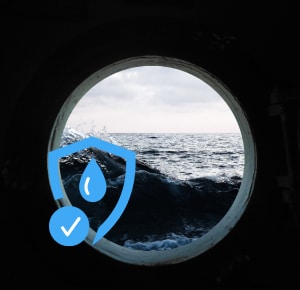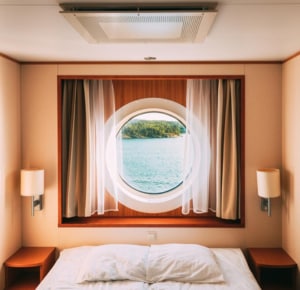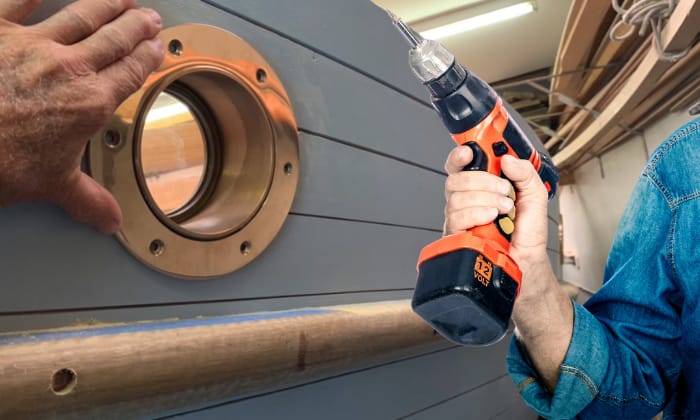Have you ever beheld a boat and were instantly drawn by the circular “windows” on its
sides? You may have heard about portholes in passing but never really learned more.
Intrigued, you wonder, “What is a porthole on a boat and what other purpose does it serve?”
Well, portholes are exactly what most of us thought they were: windows on a ship. They aid in ventilation and let natural light in. They also afford a captivating view or two.
Table of Contents
Definition and Purpose of Portholes
Admittedly, the official porthole meaning seems rather underwhelming at first. Also known as side scuttles, portholes are small, circular windows on the sides of a vessel’s hull. You can’t get more generic than that.
However, once we dive a little deeper, we inevitably uncover some interesting facts about portholes. For one, since they’re called “portholes”, does that mean they’re only found on the port (left) side of the boat? Nope.
Did you know that it’s actually based on the French word porte, which literally means “door”? This is because in the war frigates of the past, cannons used to be positioned on the exact location of portholes (on the sides of the lower part of the hull).
They literally put holes on the frigates and covered them with a porte to prevent the ingress of water. If we ponder a bit more about this association, it’s easier to make other, more metaphorical connections.
After all, doesn’t a ship porthole essentially serve as a doorway to the wonders of the aquatic world? Getting an opportunity to peer through a submarine porthole only seals the deal.
This video of a passenger on an ocean liner is particularly enchanting (and terrifying) as most of us rarely get to be this up-close-and-personal with a stormy sea in all her majestic and terrific beauty:
Would such a jaw-dropping experience have been possible without a porthole as your cabin window? I, and many other boaters, think not.
Listing Down All the Other Purposes of Portholes
So, it’s a given that portholes are round boat windows from which we can observe and marvel at whatever our nautical journey affords us. Taken as a whole, though, they fulfill other helpful functions.
1. Ventilation and natural light
Without a doubt, both are important for anyone aboard. We as passengers all need our air to be breathable (not stifling).
Moreover, nothing beats natural light flooding into our rooms, cabins, and compartments to help brighten them up – and aid in Vitamin D production in the process.
All windows impart this benefit, so there’s no longer room to question portholes’ status as being one of them.
2. Safety
Most glasses used on portholes are watertight. Once closed, during stormy and rough weather, they’ll remain closed and sealed, preventing water from entering.
3. Communication
It’s a given that anything within the immediate vicinity of the boat is visible to us. That goes both ways.
We are also visible to others if we look through portholes, and obviously, this gives us an opportunity to communicate with other boats, people on the dock, etc. This can be especially valuable during an emergency.
4. Aesthetics
Portholes come in various styles and designs nowadays. They undoubtedly lend any vessel a unique, maritime charm, especially if viewed from a slight distance.
Here’s a bit more history trivia related to portholes:
- Ship builders also dedicated ports for passing cables and lines essential for adjusting sails.
- There were also oar ports where oars can be deployed to help propel and maneuver a ship.
Porthole Construction and Materials
Most of the portholes of present times are either made of aluminum, brass, or steel and are either welded or bolted onto the vessel’s hulls. They come in various sizes (e.g. 250mm, 300mm, 350mm, and so on).
Builders decide whether they’ll install fixed or opened varieties. Fixed portholes can’t be opened or closed, while opened portholes are the exact opposite. The latter comes with a cover or hinged window to open or shut the porthole.
What about the glass used? Well, it also depends on the watercraft.
- Those used on ships will be made using a technique called sand-casting mixed with materials like ash or silica sand. They heat the glass then cool it numerous times to get the right structure.
- On a submarine, acrylic like poly methyl methacrylate is more common. It’s made with the appropriate thickness (which usually means very thick).
The plastic’s edge tends to be shaped to a cone to make it stay in place and better handle the external pressure underwater.
The type, construction, and position of the portholes are mainly dictated by the watercraft they’ll be installed to.
For instance, did you know that there are actually heavy type portholes that need to be extremely watertight since they’re located below the part of the boat that becomes submerged once it reaches its maximum cargo capacity?
The icing on the cake is the fact that most modern types of portholes (especially the light type used in passenger vessels) are optimally designed and positioned to give us the best views possible.
Did you ever wonder why portholes have a round shape? It’s because a circular shape doesn’t put as much stress on the boat as other shapes.
And, let’s face it, any ship or open-sea boat is constantly subject to harsh environments that don’t allow them to settle for anything less.
Conclusion
So, again, what is a porthole on a boat? Looking past the seemingly bland porthole definition found in dictionaries, they bring benefits that almost any nautical voyager can’t do without.
From air and sunlight to awesome views and added protection, portholes serve as the eyes of the ship, connecting sailors to the vast seas beyond. Beyond their practicality lies a unique (almost romantic) allure that tickles the adventurer inside of us.

“My intention from the first day establishing Boating Basics Online is to provide as much help as possible for boaters who want to experience a first safe and convenient trip. So feel free to join us and share your beautiful journeys to the sea!”

